|
Books by
Maria Reiche
“Markings: Aerial Views of Sacred Landscapes
by
Maria Reiche
Charles Gallenkamp
Keith Critchlow
Lucy Lippard
(Contributors)
Marilyn Bridges
(Photographer)
Haven O’More
(Preface)
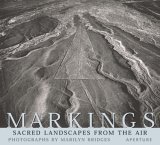
EU English Edition
“Mystery on the desert: A study of the ancient figures and strange delineated surfaces seen from the air near Nazca, Peru”
by
Maria Reiche
Unknown Binding
1949 Edition
“Geheimnis Der Wuste/
Mystery on the desert/
Secreto De La Pampa”
German/English/Spanish
by
Maria Reiche
Hardcover
1968 Edition
“Peruanische Erdzeichen/Peruvian Ground Drawings
German & English
by
Maria Reiche
(Author)
Malcolm G. Leybourne
(Translator)
Dr. Hermann Kern
(Translator)
Hermann Kern
(Foreword)
1974 1st Edition
“Geheimnis Der Wuste/
Mystery on the desert/
Secreto De La Pampa –
Preliminaries for a Scientific Interpretation of the Pre-Histori c Ground-Drawings of Nazca, Peru and Introduction to Their Study“
German/English/Spanish
by
Maria Reiche
Hardcover
1989 7th Edition
Signed by author
Books about the Nazca
lines & geoglyphs
“Maria And The Stars Of Nazca / Maria Y Las Estrellas De Nazca”
Spanish & English
by
Anita Jepson-Gilbert
Rodger Osban
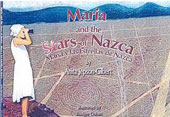
EU English Edition
“Ancient Nasca
Settlement & Society”
by
Helaine Silverman 
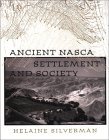
EU English Edition
“Nasca society arose on the south coast of Peru 2000 years ago and evolved over the course of the next 700 years. This text examines the range of sites occupied by the people responsible for some of the most exquisite art and ingenious hydraulic engineering of the pre-Columbian world.
“The Nasca
(Peoples of America)”
by
Helaine Silverman 
&
Donald A. Proulx 

EU English Edition
“Ancient Nasca culture of the south coast of Peru is famous for its magnificent polychrome ceramics, textiles, and other works of art, as well as the enigmatic ground markings on the desert plain at Nasca. In the past two decades much has become known about the people who produced these fascinating works. This scholarly yet accessible book provides a penetrating examination of this important civilization.”
|
|
Three of the photographs below were taken from the top of a tall step-ladder. While the whole scheme covers a very wide area it can be seen that the finer detail, especially that of the animal, bird and human-like figures, was achieved on a much smaller scale. Some of lines have been scraped quite deeply into the desert surface, while others are barely superficial scratches. It seems from comparing the first two pictures that the straight lines were the deepest, though even these were generally only a few inches deep.
The sheer size of the geoglyphs can only be really appreciated when viewed alongside a human figure to help guage the scale. One of the wide, straight lines is shown with the human figure to the right of it, continuing further towards the horizon, and stretching for many miles. The first picture immediately below shows part of one of the animal figures, its narrow border a single line. The picture below that shows in close-up detail the contrast between the shallower depth of the animal figures and the deeper markings that characterise the vast number of perfectly straight lines that criss-cross the Nazca desert plain. But even these few are no deeper than 12 inches at the most.
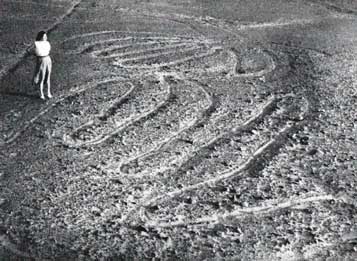
Copyright © 1949, Maria Reiche
There appears to have been no particular reason for the variety of widths of many of the lines which make up both the contours of the figures, and the straight lines that connect many of the star-like centres. Undoubtedly there was a good reason in the minds of the builders for these differences, and perhaps the astronomical considerations built into many of the drawings could hold the key to this. Possibly the width of the sun or moon as observed on the respective local horizons to which they point?
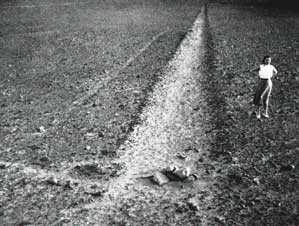
Copyright © 1949, Maria Reiche
In some instances the lines are much wider than the continuous line shown in the picture above. Maria Reiche often despaired at the many horse, or donkey, tracks that cut through a number of the figures, but she understood this was because their sheer size made them almost impossible to recognise at ground level if you did not know they were there. Of one particular bird figure, all that is left of which is the head and wings, she says:
“The line which describes its contours, having a width of over ten feet, looks from the ground like a wide road which only by its frequent turns can be recognised as part of a figure.”
The whole region where the ground-drawings can today be found was originally a vast basin which was located between the Andes and a range of small, flat-topped hills, elevated at almost the same height above the nearby coastline, which they follow. At various times this basin was below sea-level, and during those periods the sea-water penetrated the basin area, mixing with the alluvionic deposits brought down from the Andes by the streams and small rivers. Discussing the question of how the drawings could have withstood the ravages of time and weather over so many centuries, Maria Reiche says:
“The climate is one of the driest of the globe. One could say that it rains for half an hour every two years. And although strong winds carry great quantities of sand, not encountering any obstacles on the vast tablelands open towards north and south, they take it further north, where at seventy miles’ distance one can see huge dunes on both sides of the highway … The fine material between the stones (on the edges of the figures) was blown away by the wind. The result of this process was a vast plain, covered with dark stones, which was gradually cut by rivers, whose widening valleys were to provide the ground-drawing population with their beans, maize and peanuts.”
One of the better preserved geoglyphs is that of a dog-like creature with long legs and a long tail, shown below. In this aerial picture it seems that the dog-like creature has two tails – each pointing in different directions – but more importantly, it shows a number of now-feint lines which appear to have been drawn some time before the animal shape was dilineated.
This could well suggest that the figures are of later construction than the straight lines and trapezoids, and further suggests that the endeavor of marking the desert floor was one that had been carried out over countless generations.
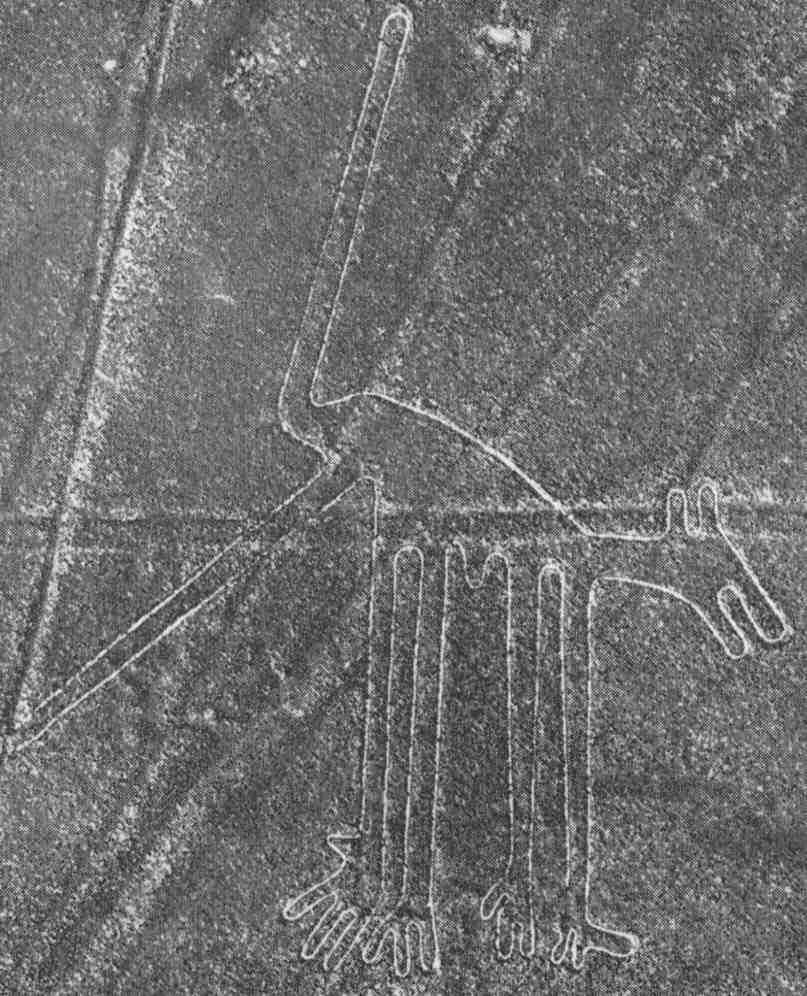
Copyright © 1949, Maria Reiche
As can be seen in the picture above, several of the lines are not at all perfectly ‘straight’, but meander in a way that is suggestive of the winding paths caused by their long-term uses as cart-tracks for many centuries. When the last of the Nazca cultures responsible for the construction and maintenance of the ground-drawings collapsed, later settlers and newcomers were presumably unaware of the existence of the massive drawings, as there are many examples of more recent destruction caused by the imprints of horses hooves, cart and car-tyre tracks at various places all across the Pampa. Perhaps the reason for this was simply quick access to the small valleys between the plateaus, which was where the inhabitants lived and grew their foodcrops.
“The great majority of animal figures and some others consisting of winding paths can be found near the descent to the Ingenio-valley on a strip of land which is densely covered with geometric drawings.”
The picture below is of the legs and feet of the dog-like creature, and again the human figure on the right of the feet was included by Maria Reiche in order to give an idea of the both the fine detail, and also the scale of the geoglyph generally.
From this perspective, the fact that most of the animal figures are made of just one continuous line can be easily appreciated, and this has moved some commentators to suggest that the outlines of the geoglyphs might have served as “processional routes”, which the local population and/or the local priesthood may well have walked along “ceremonially” on certain feast-days.
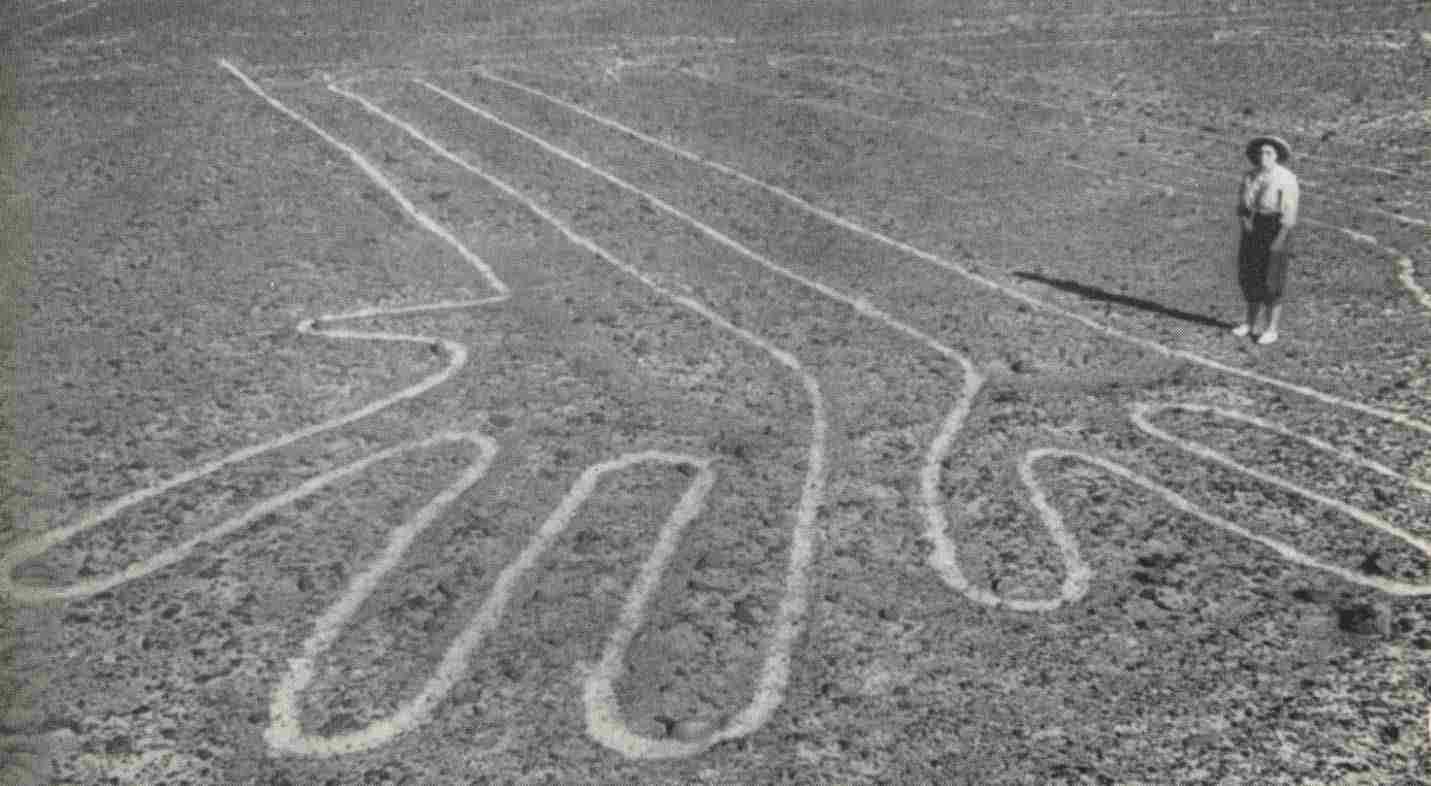
Copyright © 1949, Maria Reiche
The ingenuity of the ancient Nazcans seems to lie not only in their skilfull surveying of the numerous dead straight lines that criss-cross the pampa, but also in their exact knowledge of geometry and of astronomy combined with a complete understanding of the weather and environmental conditions on the Nazca plain.
When people speak about ‘ancient indigenous knowledge’ the first thing generally mentioned is the knowledge of plants and their medicinal and nutritional properties.
But this is only a small part of a much wider spectrum of knowledge about the natural world. The properties of various woods, and also of the various kinds of rock and stones, were also a large part of the knowledge of all peoples in ancient times – especially the usages to which they could practically be put, and the ways in which natural substances react to extremes of weather.
Of this, Maria Reiche wrote:
“Owing to their dark colour, the surface stones absorb much heat, causing a cushion of warm air to protect the surface from strong winds. An additional factor contributing to the ground remaining undisturbed for hundreds of years is that the soil contains a certain amount of gypsum which, moistened by daily morning dew, slightly affixes every stone to its base.
This makes it possible to retrace the steps by which the ancient topographers laid out the accurate shapes of their complicated structures, having used stones as markers which have remained in the same place where they were put when the drawing were made.
It was found, for example, that the huge regular curves of animal figures were composed of segments of circles, whose centers were marked by a stone which had, or was cut to, one hundredth of the corresponding radius.”
all quotes on these tribute pages are from
“Mystery on the Desert”
by Maria Reiche
|
|
To understand why this News Page is sometimes late here is some information about Fibromyalgia
“Pathways to the Gods: The Mystery of the Andes Lines”
by
Tony Morrison
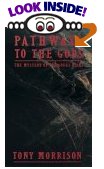
EU English Edition
“Nazca: Eighth Wonder of the World?”
by
Anthony F. Aveni
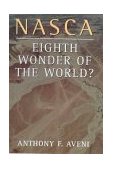
EU English Edition
“Between the Lines: The Mystery of the Giant Ground Drawings of Ancient Nasca”
by
Anthony F. Aveni
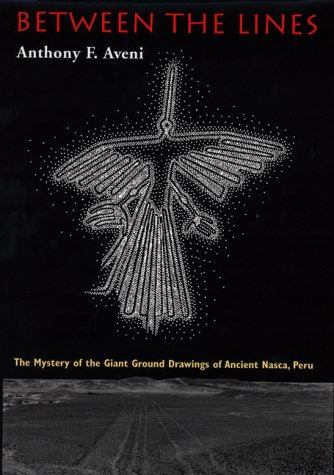
EU English Edition
“The Cities of the
Ancient Andes”
by
Andriana von Hagen
& Craig Morris

EU English Edition
“The largest empire of pre-Columbian America was toppled in under a decade by a handful of Spanish invaders who looted the fabled riches of its greatest city, Cuzco, and severed its 15,000 mile system of roads. But this Inca empire was only the final link in a chain of urban development stretching back to 2500 B.C. How did cities evolve in the ancient Andes?”
“The Nasca
(Peoples of America)”
by
Helaine Silverman 
&
Donald A. Proulx 

EU English Edition
“Ancient Nasca culture of the south coast of Peru is famous for its magnificent polychrome ceramics, textiles, and other works of art, as well as the enigmatic ground markings on the desert plain at Nasca. In the past two decades much has become known about the people who produced these fascinating works. This scholarly yet accessible book provides a penetrating examination of this important civilization.”
Nazca News
more information
about the Nazca lines
& geoglyphs on
:
Landscape Geometry
Lines Over Mountains
Animals & Landscape
Figures On The Plain
The Human Scale
Birds On The Pampa
The Spider Geoglyph
& The Stars Of Orion
Spirals In The Desert
if you would like to support our
astro-archaeology research projects
please send us a book

from our Wish List
|